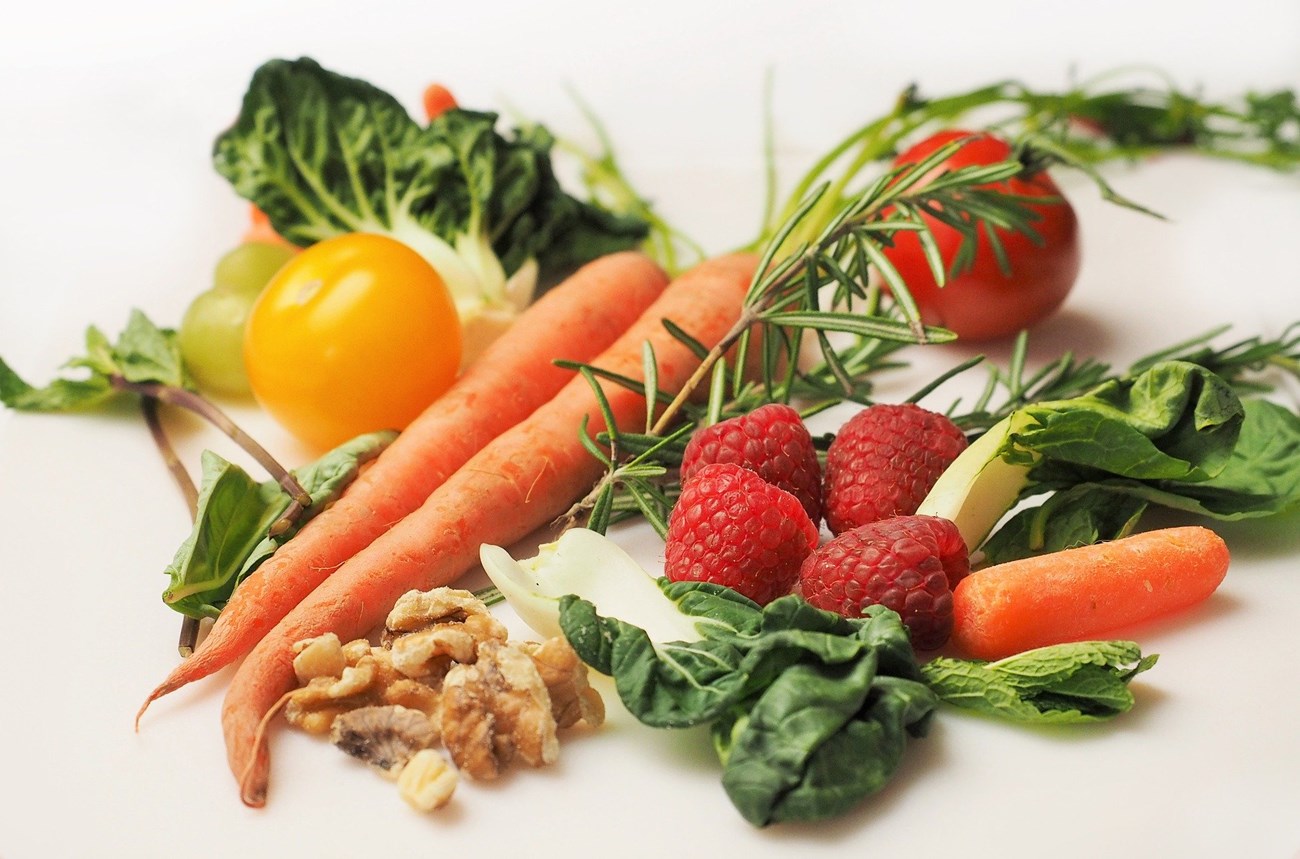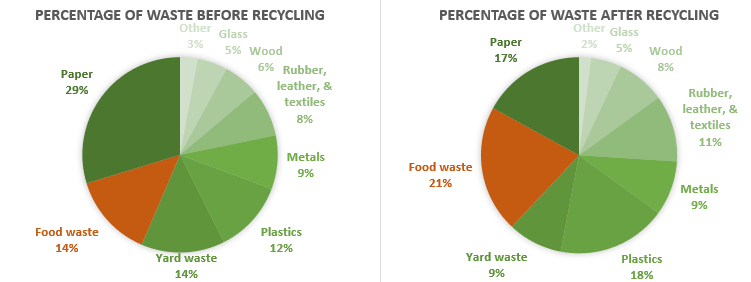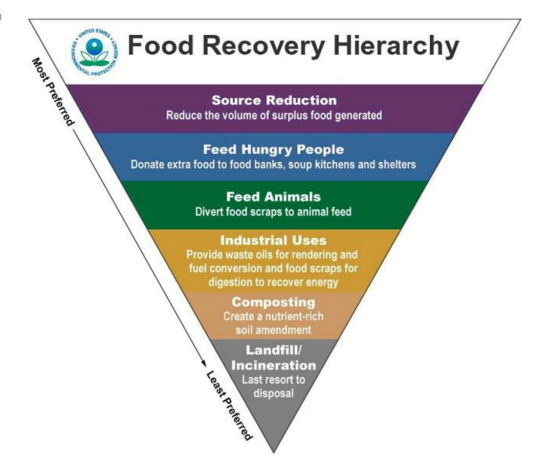Last updated: August 11, 2021
Article
Food Waste - Part 1

What is Food Waste?
Wasted food is the largest component of trash in the United States. Food waste or food loss is food that is discarded or not eaten. Food loss can occur at any stage of the supply chain – during production, processing, retailing, or consumption. It is any loss of food post-harvest, regardless of the cause. While mold and pests that contaminate food result in food being inedible, plate waste is wasted edible food going unconsumed or discarded due to undesirable color or blemishes. According to the United States Department of Agriculture (USDA), 30-40 percent of the food supply becomes food waste.
In 2010, the U.S. Environmental Protection Agency (EPA) estimated that food waste accounted for nearly 14 percent of total solid waste in the United States, before recycling. Less than three percent of this food waste was recovered and recycled. After recycling, food waste accounted for about 21 percent of the remaining total solid waste, the highest of any other waste category. Unfortunately, food waste ends up in landfills and generates methane gas as it decomposes. Methane gas is more powerful in accelerating global warming than any other gas, including carbon dioxide.

According to the EPA Food Recovery Hierarchy, the best way to prevent food waste is to reduce its volume at the source. However, once food excess has occurred, the next best option is to divert the surplus to feed people in need. Unfortunately, some food excess inevitably becomes plate waste, which is not sanitary to redirect to people. According to the Food Recovery Hierarchy, the best methods to divert food waste that is not otherwise available for human consumption include:

-
Feeding animals;
-
Recycling for industrial purposes (e.g., creating energy) using digesters; and
-
Composting.
Many of our national park concessioners already use one of these methods to reduce food waste. However, finding ways to reduce food at the source still eludes many concessioners, caterers, and restaurateurs alike.
Kurt Rausch, Chief of the National Park Service Commercial Services Program, attended the 2019 Sustainability Roundtable at Cornell University. During the roundtable, many discussions ensued about new methods and tools being used to reduce waste at all levels of the EPA Food Recovery Hierarchy, starting with source reduction.
Over the course of the next few GreenLine articles, we will discuss methods, options, and tools used at all levels of the Food Recovery Hierarchy, and some of the pros and cons of various methods.
Source Reduction
Planning the amount of food needed for an event can be extremely challenging. Running out of food at an event can be one of the worst things to happen in the food industry, as nobody wants their guests to go hungry. However, overserving and overpreparing food can lead to massive amounts of food waste. The best way to minimize food waste is to stop waste from occurring in the first place. Although challenging, some of the benefits include:
-
Saving energy associated with growing, preparing, and transporting food.
-
Minimizing pollution related to food production.
-
Reducing methane gas emissions from landfills.
-
Saving money by purchasing only what is necessary.
-
Avoiding additional costs and energy associated with food waste disposal.
-
Saving labor costs through more efficient food preparation, handling, and storage.
Waste Audit
The first step to food waste source reduction is to perform a waste audit. A waste audit allows you to learn what is flowing through and out of your kitchen. By measuring the amount and type of food waste you are generating and determining the reason for your food waste, you will better understand the type of waste being produced and why. This will allow you to identify and create effective ways to reduce it.
There are a variety of options and tools available to help with a waste audit including several free tools offered by the EPA. Other companies use innovative tracking systems equipped with a camera and scale to track and help prevent food waste.
Repurpose
A waste audit not only allows you to realize where you may be over-purchasing food, but it also enables you to identify opportunities to repurpose food that would otherwise become waste. Repurposing can include using blemished or misshapen foods, like fruits and vegetables, in creative ways that keep them from becoming food waste. For example, rather than placing fruits of this sort in a fruit basket to be ignored, try using them as garnishes or chopping them up for use in recipes.
Creative chefs have found many ways to repurpose food following a waste audit. For example:
-
A waste audit demonstrated to one company that its biggest food waste was coming from unsold breakfast pastries. The pastry chef began turning the unused pastries from breakfast into a tasty bread pudding for dessert.
-
One chef discovered that a significant amount of asparagus stems were going to waste. He began instructing his staff to save the stems and turn them into asparagus soup.
-
One company knew they bought the same amount of fish each week and would always have some left over. After starting to track their waste, they realized how much was being wasted and cut their fish order in half. From the savings, they were able to buy higher quality products that they could not afford before.
What is Next?
Conducting a waste audit does not in itself fix the food waste problem, but it provides guidelines on how to make behavioral changes. Most of these changes happen behind the scenes, such as those described in the repurpose section, but, even more importantly, companies using waste audit tools are minimizing food excess and realizing savings in purchasing and disposal costs.
There are a variety of ways to help prevent food excess at the customer level. The next GreenLine article will discuss some suggestions and ideas for preventing food excess and plate waste at the customer level and will also contain information on other parts of the EPA Food Recovery Hierarchy.
